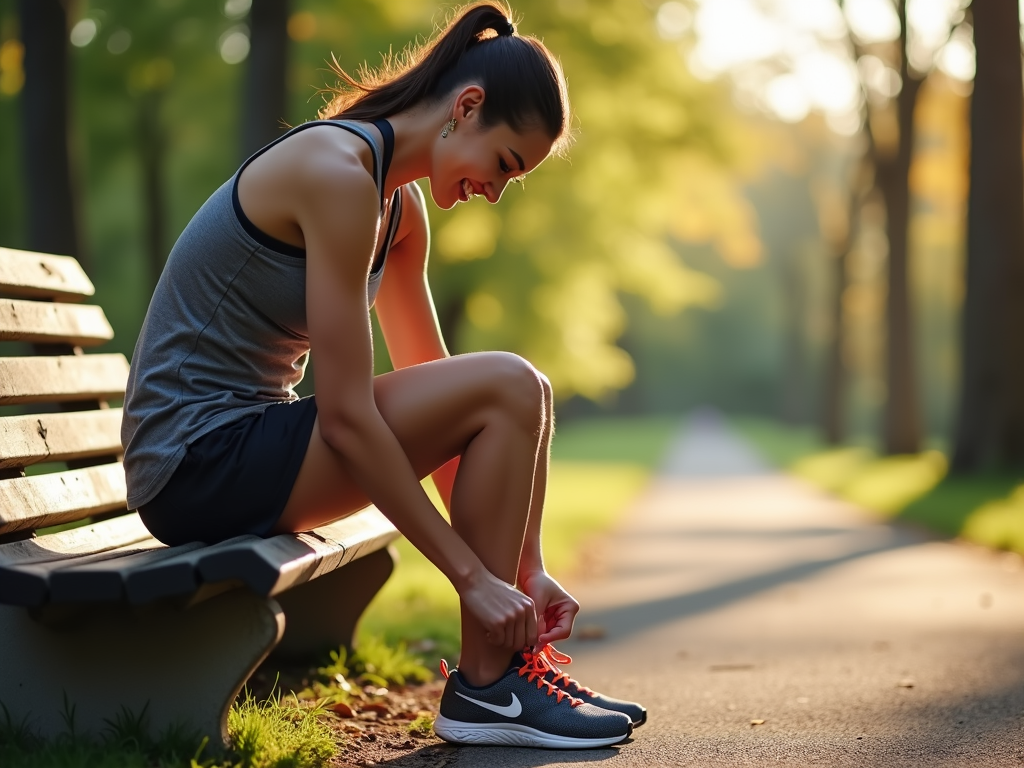Overview
Choosing the right running shoes is crucial for both performance and injury prevention. Whether you're a beginner or a seasoned runner, the right pair can make all the difference in your running experience. This guide will walk you through the essential factors to consider when selecting running shoes, ensuring you find the perfect fit for your feet and running style.
Why the Right Running Shoes Matter
Wearing the wrong shoes can lead to discomfort, blisters, and even long-term injuries. On the other hand, the right pair can boost your performance, provide comfort, and help you maintain an active lifestyle. Understanding how to choose the right running shoes is key to enjoying the many benefits of running, from improved cardiovascular health to mental clarity.

Understanding Your Foot Type
Before you start shopping for running shoes, it's important to know your foot type. There are three main foot types:
- Neutral: Your feet have a normal arch and don't roll excessively inward or outward.
- Overpronation: Your feet roll inward too much when you run, which can lead to injuries.
- Underpronation (Supination): Your feet roll outward, putting extra pressure on the outer edges.
To determine your foot type, you can perform a simple wet test: wet your feet and step on a piece of paper. The imprint will show your arch type. Alternatively, visit a specialty running store for a professional gait analysis.
| Foot Type | Arch Description | Recommended Shoe Type |
|---|---|---|
| Neutral | Medium arch | Stability or neutral shoes |
| Overpronation | Low arch or flat feet | Motion control shoes |
| Underpronation | High arch | Cushioned shoes |

Matching Shoes to Your Running Style
Your running style and the terrain you run on also influence the type of shoes you need. Consider the following:
- Road Running: If you primarily run on pavement or tracks, look for shoes with good cushioning to absorb impact.
- Trail Running: For uneven terrains, choose shoes with aggressive treads for better grip and stability.
- Racing: If you're into competitive running, lightweight shoes with less cushioning might be preferable for speed.
Additionally, think about your running goals. Are you training for a marathon, or do you run casually to stay fit? Your goals can help determine the level of support and durability you need in a shoe.
Key Features to Look For
When shopping for running shoes, pay attention to these features:
- Cushioning: Provides shock absorption. More cushioning is better for long-distance runners.
- Arch Support: Essential for runners with flat feet or high arches.
- Heel-to-Toe Drop: The difference in height between the heel and the toe. A lower drop encourages a midfoot strike.
- Breathability: Look for mesh uppers to keep your feet cool and dry.
- Durability: Check the outsole for sturdy rubber that can withstand wear and tear.

Trying and Testing Shoes
Once you've narrowed down your options, it's time to try on some shoes. Here are some tips for a successful fitting:
- Shop in the Afternoon: Your feet swell throughout the day, so trying shoes in the afternoon ensures a better fit.
- Wear Running Socks: Bring the socks you plan to run in to get an accurate feel.
- Check the Toe Box: There should be about a thumb's width of space between your longest toe and the end of the shoe.
- Walk and Jog: Take a few steps or jog around the store to test comfort and fit.
- Consider Orthotics: If you use custom insoles, bring them along to ensure they fit in the shoes.
Personal Insights: Learning from Experience
When I first started running, I made the mistake of choosing shoes based solely on appearance. I ended up with blisters and knee pain after just a few runs. It wasn't until I visited a specialty running store and got fitted properly that I realized the importance of choosing the right shoes. The difference was night and day—I could run longer and faster without discomfort. This experience taught me that investing time in finding the right pair is crucial for anyone serious about running.

The Benefits of Joining a Local Running Group
While choosing the right shoes is important, running with others can also enhance your experience. Joining a local running group offers several benefits:
- Motivation: Running with others can keep you accountable and motivated.
- Social Interaction: It's a great way to meet like-minded people and make new friends.
- Learning Opportunities: Experienced runners can offer tips on form, pacing, and even shoe recommendations.
If you're wondering how to maintain an active lifestyle in busy schedules, joining a group can help you prioritize your runs and stay consistent.
Summary
Choosing the right running shoes involves understanding your foot type, running style, and the key features that suit your needs. By taking the time to find the perfect pair, you can enhance your running experience, prevent injuries, and enjoy the many benefits of an active lifestyle. Remember, the right shoes are an investment in your health and performance.
Discuss Here